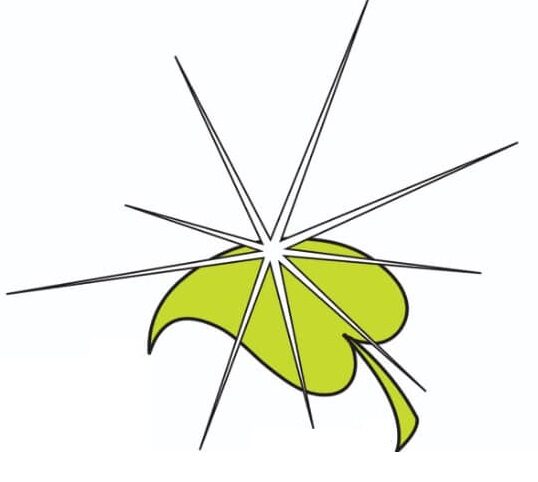Polysaccharides
Compilation and arrangement of Engineer Javidi
Description:
– Polysaccharide or glycone, polymers with high molecular weight, are composed of monosaccharide or oligosaccharide sugar chains with chemical connections.
Types of polysaccharides:
Cellulose-starch-plant gum-pectin-mucilage-fructan (inulin)-betaglucan
……………………………
Cellulose:
Description:
A polysaccharide consists of a linear chain consisting of hundreds to thousands of D-glucose units that are connected to each other by glycosidic bonds. All plant tissue is made of cellulose.
The role of cellulose in the body:
It is indigestible in the human body, it is decomposed in the symbiotic bacteria in the human intestine and turns into glucose, vitamins B, K and methane gas.
………………………………………
Starch:
Description:
A polysaccharide consisting of two types of carbohydrates called amylose and amylopectin (polysaccharides). The monomers of this polysaccharide are glucose units that are connected by forming alpha 1 and 4 bonds. The simplest amylose starch is a linear polymer. It is found more in plant seeds (barley, wheat, rice, etc.) and plant roots (potato, tapioca, etc).
The role of starch in the body:
Anti-inflammatory-chest softener-anti-cough-tonic-sedative-anti-infectious
The role of starch in the food industry:
Stabilizer and food conditioner
…………………………………………..
Resins:
Description:
– Branched chain of sugar (monosaccharide) linked together, sweet and viuronic acid are being linked.
– They are liquid, sticky, slimy, in different states (neutral-alkaline-acidic), they are odorless and fragrant, they mostly dissolve in water.
– When scratched, they ooze on the surface of the plant and prevent pathogenic agents from entering the plant.
Review of famous types of gum:
Senegalese gum (Arabic(:
Chest softener-anti-inflammatory-anti-cough-dissolving kidney stones-smoothing voice and…
Poronus Gum:
It is taken from the green tomato tree. It is in the form of gum arabic and has the same properties.
Tamarindus Indica gum:
To prepare all kinds of sauces, anti-inflammatory, anti-constipation
Acacia seed gum:
To stabilize the texture of gluten-free breads, it is used with starch, oil, enzyme or skimmed milk powder.
Red algae gums (agar):
Clinical properties:
Anti-stomach ulcer-anti-constipation-
Industrial items:
Preparation of culture medium in the laboratory
Brown algae gum (kelp):
Rich source of iodine and minerals
Red Icelandic moss gum (carrageenan):
Fat burning and appetite reduction – food industry (kappa carrageenan type is mostly used in dough and butter to create a natural jelly state)..
Brown algae gum (Focus vesiculos):
Contains ellagic acid-a linear polymer-reducing the harmful effects of heavy metals-burning fat-anti-diabetes-regulating body weight-strong antioxidant.
……………………………………………
Pectin:
Complex carbohydrates in the base of galacturonic acid are seen more in the cells of fruits (apples, dates, persimmons, lemons, etc.)
In the food industry (fixing the food oven) – regulating the work of the digestive system (anti-diarrhea and constipation(.
………………………………….
Mucilage:
Polysaccharide with a long chain – it clumps in water – reduces appetite – anti-cough – laxative – anti-internal bleeding – anti-inflammatory – anti-hemorrhoids, fistula, fissure, hemorrhoids, etc.
Sources of mucilage: cough grass (Pakhri) – red elm – borage root – marshmallow flower and cheese – egg (Balango – barhang – asparagus – flax – basil – godumeh – koshe – seed – sepstan – khakshi – chia – quinoa and… )
………………………………………
Beta-glucan:
A fiber soluble in water – reducing blood sugar and fat – increasing the immune system – useful in fighting and preventing HIV, HSV1, HSV2 and…
The mechanism of action of beta-glucan on the immune system:
This soluble fiber stimulates and increases all types of white blood cells, including: leukocytes, monocytes, macrophages, interferons, cytokines, etc., with a physical effect on the intestinal tissue.
Sources of beta glucan:
Jodoser-alpha alpha mushroom-shiitake mushroom-ganorma mushroom-yeast and…
……………………………….
Fructan:
There are fructose polymers that store energy instead of starch in some plants.
Inulin:
Inulin is a fructane substance, with 35 fructose sequences, with a glucose end. It is found in plants (root of papaya, ginger, artichoke, echinacea, daffodil tuber, pickled potato, sunflower, etc…)
Properties of inulin:
Regulating blood sugar, opening liver vessels, stimulating the immune system, diuretic and…
Good luck – Engineer Javidi
, Javidi,Engineer Javidi,Javidi Teb,Zarin Giyahe Pars,Reza Javidi,Phytochemistry,Plant Chemistry,Medicinal Plant Chemistry,Polysaccharide,What is Polysaccharide,Types of Polysaccharide,Structure of Polysaccharide,Properties of Polysaccharide,Starch,Properties of Starch,Structure Starch,types of starch,beta-glucan,properties of beta-glucan,immune system enhancement,anti-AIDS, anti-genital warts,gum arabic,gum arabic,properties of gum arabic,resin,gum,purnus gum,tamarind gum,acacia gum,red algae gum,agar,Properties of agar,properties of red algae gum,Brown algae gum,kelp, properties of kelp gum,Icelandic moss gum,carrageenan,properties of carrageenan,fucus vesiculos,what is pectin,properties of pectin,plants with pectin,yeast,alpha alpha mushroom,shiitake mushroom,Gnoderma Elychium mushroom,Ganoderma property,shiitake mushroomproperty mucilage,properties of mucilage,plants with mucilage,ellagic acid,properties of ellagic acid,what is ellagic acid,the mechanism of the effect of beta-glucan on the immune system,the effect of beta-glucan on the immune system,fructan,what is fructan,inulin,what is inulin,properties of inulin,plants with inulin,ginger,sage root,artichoke
